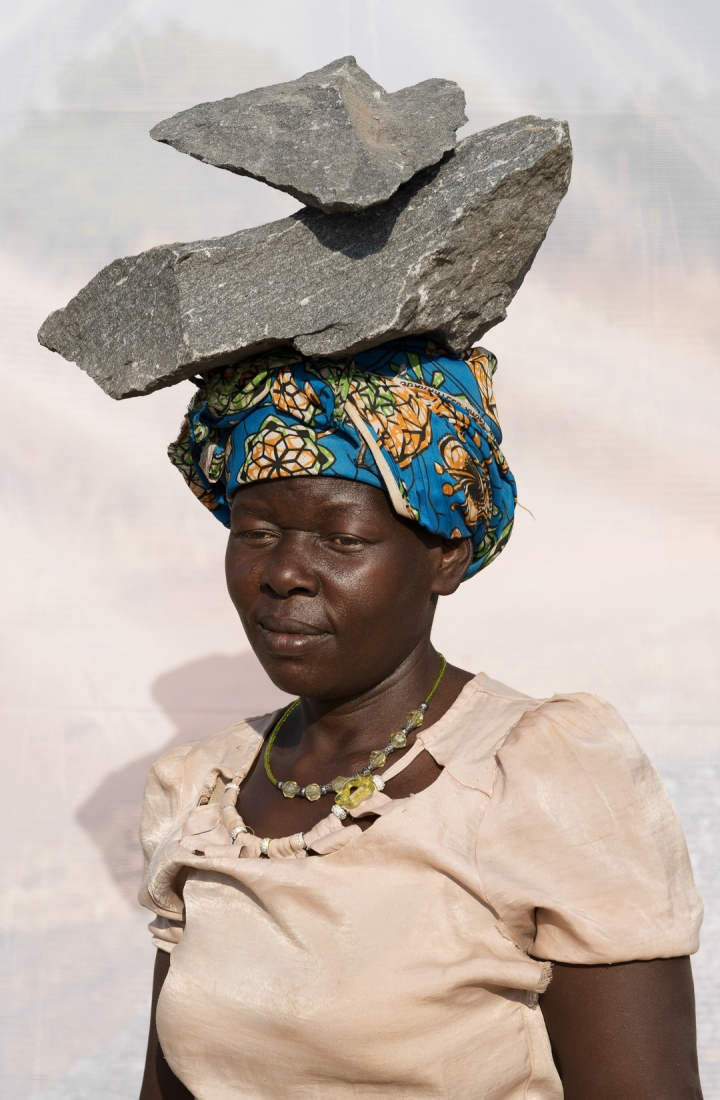Portrait - NOMINEE: dan nelken
dan nelken
HeadStrong: The Women of Rural Uganda
Support this photographer - share this work on Facebook.
In Uganda, and elsewhere in sub-Saharan Africa, local and traditional tribal customs inform the behavior of single and married women. Part of that role includes being subservient to the male head of the family. Women are expected to take care of most domestic duties as well as help support their families financially.
During my three trips to Uganda volunteering for an NGO, I was fortunate enough to have interacted with some of the local women who impressed me by their work ethic, dignity, comportment, and sense of humor. My initial intention was to see if I could showcase photographically these qualities as a way to express my respect and admiration.
Initially I took environmental portraits of these women. Realizing that these images did not accomplish what I was hoping to capture, I decided to create a portable portrait studio, using mosquito netting as a backdrop. The material’s quasi-transparency successfully segregates the women from their environment without isolating them. It achieved one of my objectives, to allow these women to be recognized for their personality and the pride they had in their labor. The netting also became a metaphor for the lack of preventive medical care, which defines this region.
Local assistants helped set up the netting at markets and rock quarries and also explained my project objectives to potential subjects in their local language. Each woman was first interviewed and asked a series of questions regarding their work and how much they earned in an average day. The women were photographed after individually completing the interviews.
Each trip created new ideas for expanding my project. As a Muzungu (a Bantu language term to referring to a person of European descent), I knew that I could not fully understand the culture and customs. Therefore, I have partnered with Beatrice Lamwaka a well-known Ugandan author, who was shortlisted for the 2011 Caine Prize for African Writing, and was also a finalist for the PEN/Studzinski Literary Award 2009. Beatrice will provide the essential African female viewpoint that this project needs.
Moving forward, we intend to have a comprehensive interview process with our subjects, followed by photographic sessions at work and with their families in their own homes. We intend to allow our subjects to have their own voice, including women who are comfortable in their traditional role, as well as women who are attempting to break through traditional barriers. A voice that is rarely heard.
About author:
A photographer and educator born in Tel Aviv, Israel of Holocaust refugees, I emigrated with my parents & younger brother to Montreal, Canada when I was 7, each one of us carrying one suitcase and only knowing how to speak Hebrew. A year later we moved to Toronto, waiting to immigrate to the US, which happened three years later with a move to Chicago, where I tried to assimilate to a new culture and school without the success that I was hoping for.
When I graduate from high school with mediocre grades due to my dyslexia. Since I had the talent and passion for art, the logical choice was applying to a college that had a BFA degree.
My photography career began my junior year as a Graphic Arts majors at Pratt Institute when I was required to take a two-semester course in photography, a course I did not want to take, being obsessed with painting. At that time I could not comprehend that my adult biography and life time profession would start after I attended my first class. The life transforming experience occurred when I saw Robert Frank’s “Parade, Hoboken, New Jersey.” For the first time, I realized that I could crop and frame the world around me in countless creative ways. At that moment I decided that I wanted to be a photographer!
W. Eugene Smith and Cornell Capa, both of whom I knew personally, influenced my decision to become a photojournalist. Their dedication and perseverance as photographers had a great impact on my decision to follow their lead.
For a number of years I had assignments from some of the leading magazines in the United States. As economic circumstances changed in the publishing world, I pivoted to studio photography, engaging editorial and advertising clients. Simultaneously I pursued my own personal projects.
These projects center on individuals or groups that exist on the cusp of mainstream American culture: The Hell’s Angels MC; the mentally and physically challenged; demolition derby participants; and rural family farmers.
My work has been published and exhibited around the world in solo and group exhibitions. The Houston Museum of Fine Arts, Portland Art Museum, International Center of Photography, Harverford College Fine Arts Photography Collection and The Center for Photography Woodstock all have my work in their permanent collection.
My book, “Till the Cows Come Home: County Fair Portraits” was published by Kehrer Verlag in 2008.

